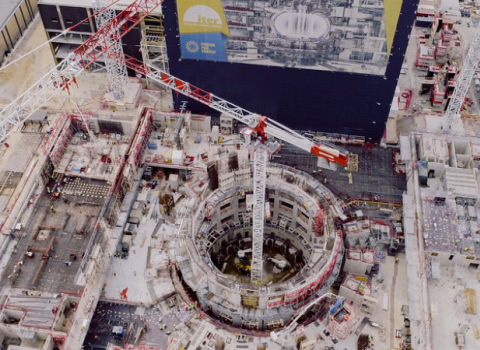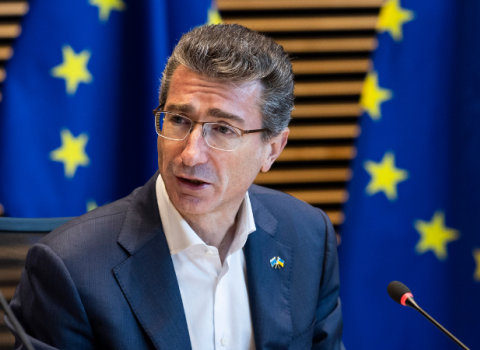KU Leuven inaugurated the brand new BioScience Centre on 20 June. This state-of-the-art research building will lead the way in sustainability and flexibility. The BioScience Centre will bring together 500 researchers who are currently working in various locations across the city and at Arenberg Campus. The building is also designed to respond rapidly to future scientific needs.
The inauguration of the Leuven BioScience Centre is an important step forward in reinforcing and renewing KU Leuven's life science infrastructure. With an area of more than 30,000 m2 spread over 14 floors, the building will be home to 7,900 m2 of modern laboratories, as well as offices, labs, a lecture hall, a cafeteria, and several ‘living spaces’:
"The building is more than just a workplace, it's hub for connection and collaboration," according to Rector Luc Sels. "Researchers from different disciplines will meet here to exchange knowledge in open 'living' spaces that connect floors and researchers."
Two walkways and a tunnel connect the BioScience Centre with the Leuven Chem&Tech building and the Leuven NanoCentre, so it really does occupy a central role in Arenberg Science Park.
Sustainable technology
The building also leads the way in the use of fossil-free, sustainable technology for heating, cooling and ventilation. A laboratory environment consumes a considerable amount of energy, with some labs requiring year-round cooling or heating. Proper ventilation is also essential.
This was addressed from the outset with a smart building layout that takes into account the effect of sunlight. Exterior blinds were fitted on the south side; while air for ventilation is drawn from the cooler north side of the building.
Thanks to the intelligent control of two water-to-water heat pumps with heat recovery, combined with three reversible air-to-water heat pumps, a borehole energy storage (BEO) field with a heat pump and 94 geothermal boreholes, and two dry coolers, the building’s energy consumption is kept to a minimum all year round - without the need for any fossil fuels. KU Leuven also purchases green electricity, so the building's entire energy supply is virtually net zero. The ventilation room is located on the seventh floor, in the core of the building, which allows the use of smaller ventilation ducts and less fan energy to circulate air throughout the building. The additional benefits of solar panels, rainwater recovery and a large underground bicycle storage facility result in a building that is ready for the future.
"The Leuven BioScience Centre reflects how we are investing not only in research, but also in well-being and a liveable, sustainable working environment," says Gerard Govers, Vice Rector of the Science, Engineering and Technology Group, who is also in charge of the sustainability policy. "The flexibility of the building is another bonus in terms of sustainability, as the architecture takes into account that needs can change. The building is prepared for this."
This article was first published on 20 June by KU Leuven.





 A unique international forum for public research organisations and companies to connect their external engagement with strategic interests around their R&D system.
A unique international forum for public research organisations and companies to connect their external engagement with strategic interests around their R&D system.